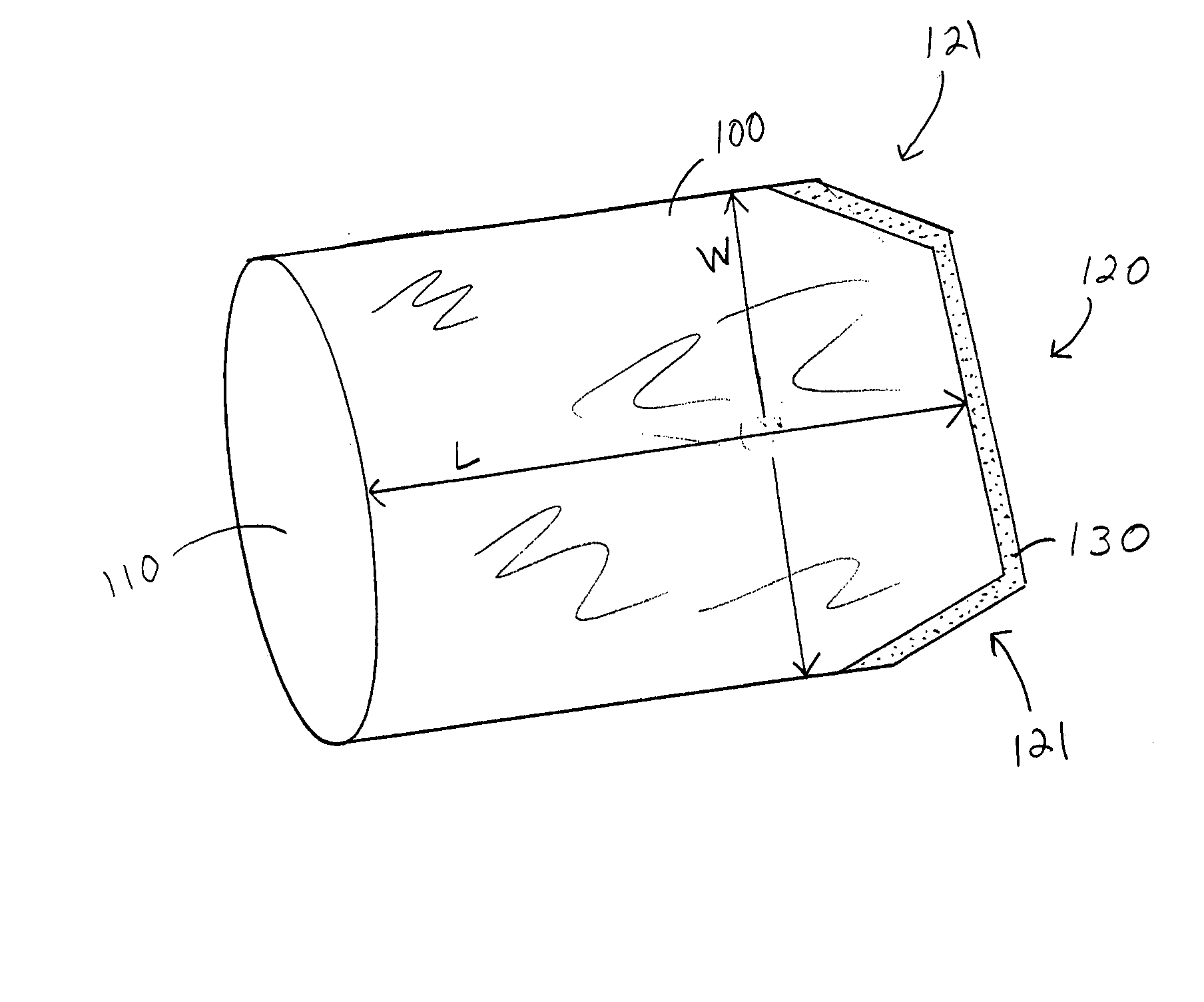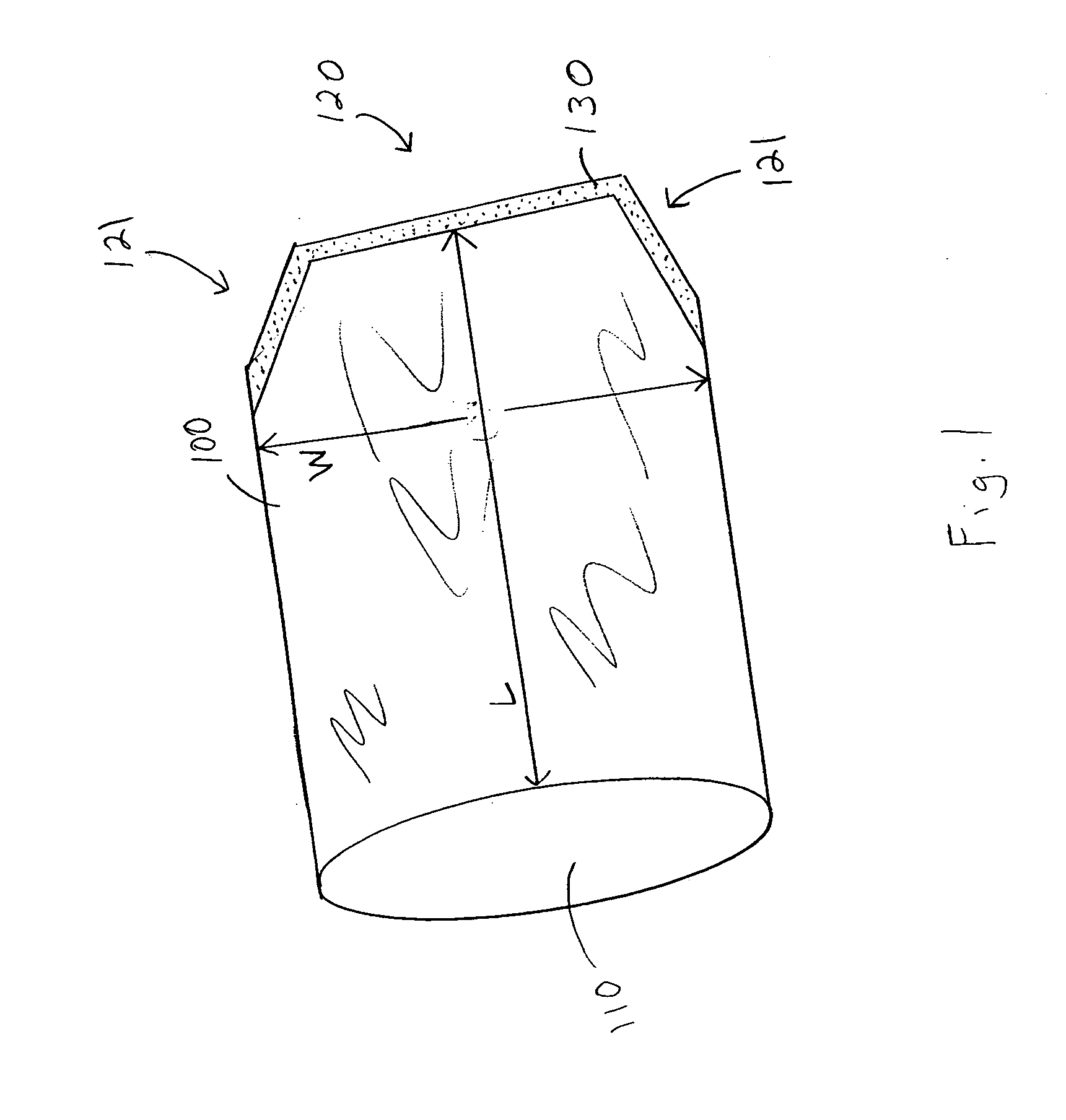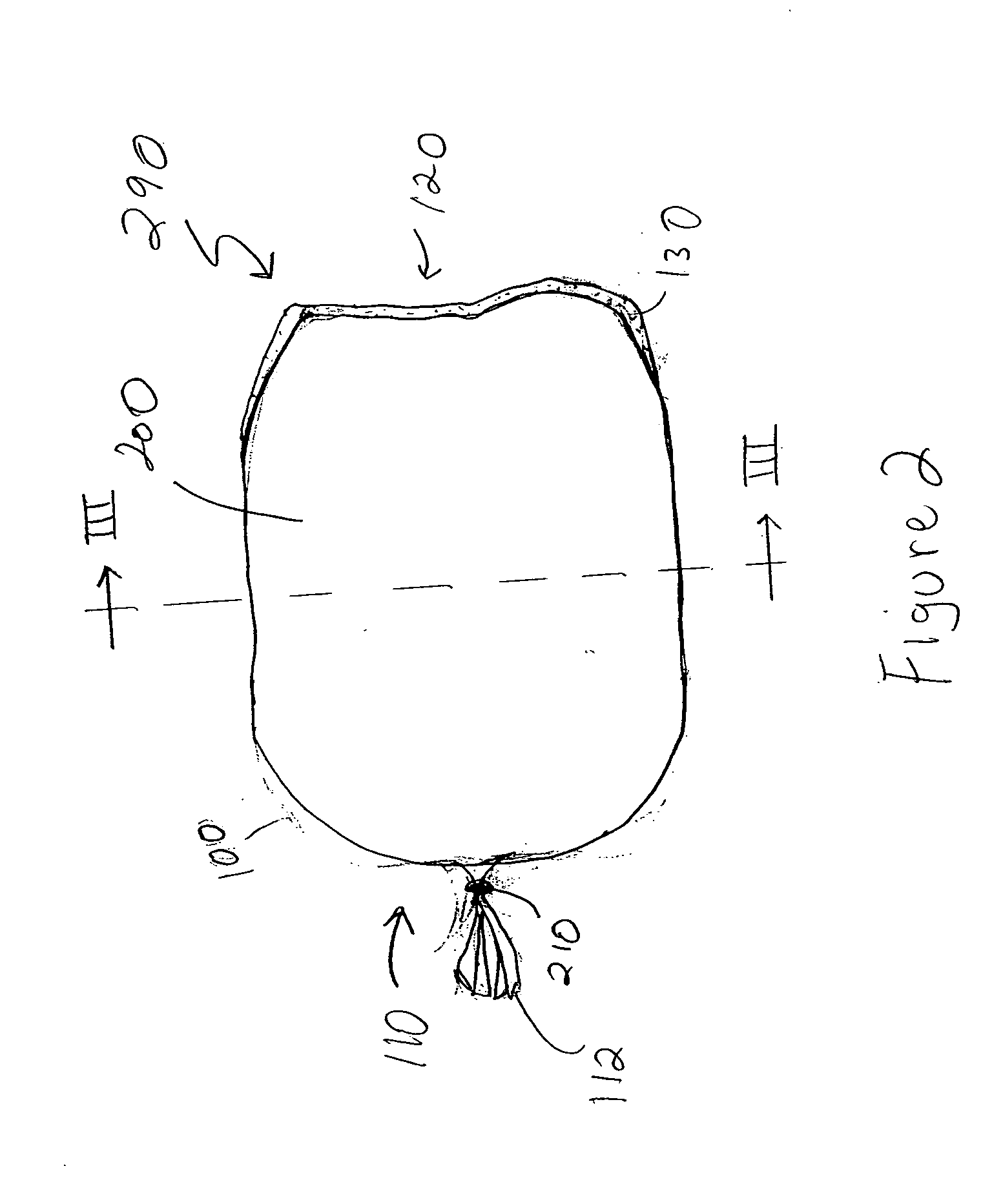Method of packaging and cooking bag and method for packaging and preparing a meat product
a technology for meat products and cooking bags, applied in the field of bags, can solve the problems of affecting the cooking time of meat products, polyester bags are prone to breaking, and the heat seal at one end of the bag fails, so as to reduce the cooking time, prevent messes, and promote browning.
- Summary
- Abstract
- Description
- Claims
- Application Information
AI Technical Summary
Benefits of technology
Problems solved by technology
Method used
Image
Examples
Embodiment Construction
[0013] The present invention will be discussed with reference to preferred embodiments of cooking bags. Specific details are set forth in order to provide a thorough understanding of the present invention. The preferred embodiments discussed herein should not be understood to limit the invention. Furthermore, for ease of understanding, certain method steps are delineated as separate steps; however, these steps should not be construed as necessarily distinct nor order dependent in their performance.
[0014] Referring now to the drawings, wherein like reference numerals designate identical or corresponding parts throughout the several views, FIG. I is a drawing of a bag 100 according to an embodiment of the invention. The material from which the bag is formed must be capable of withstanding cooking temperatures up to about 450 degrees Fahrenheit and must exhibit good tear and puncture resistance at temperatures between about 25 degrees Fahrenheit to about 450 degrees Fahrenheit. The ba...
PUM
| Property | Measurement | Unit |
|---|---|---|
| temperatures | aaaaa | aaaaa |
| temperatures | aaaaa | aaaaa |
| temperature | aaaaa | aaaaa |
Abstract
Description
Claims
Application Information
 Login to View More
Login to View More - R&D
- Intellectual Property
- Life Sciences
- Materials
- Tech Scout
- Unparalleled Data Quality
- Higher Quality Content
- 60% Fewer Hallucinations
Browse by: Latest US Patents, China's latest patents, Technical Efficacy Thesaurus, Application Domain, Technology Topic, Popular Technical Reports.
© 2025 PatSnap. All rights reserved.Legal|Privacy policy|Modern Slavery Act Transparency Statement|Sitemap|About US| Contact US: help@patsnap.com



